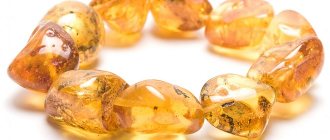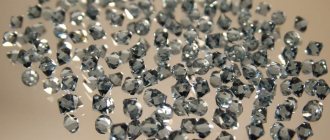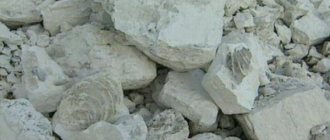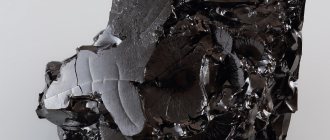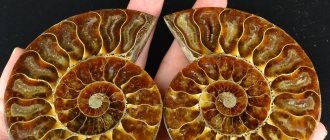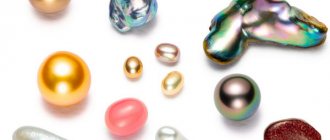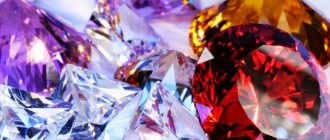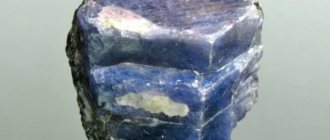The very concept of "geode" is of Greek origin - "geode". This word denotes an object similar in shape to the Earth, that is, spherical. Geodes are round formations in the rock, their crust is hard, and inside there is a void, often filled with crystals of precious stones.
Such objects could vary in size - from 1 cm to 1 m. Small geodes, whose diameter is less than even a centimeter, are called tonsils. Large formations, especially those that can accommodate a person, are called caves. There are few such finds, and each of them bears its own name. These formations do not necessarily have rounded shapes - modern scientists call geodes all cavities in the rock, inside of which crystals of amethyst and other stones grow.
Precious geodes
Not all geodes attract collectors and jewelers, but only those filled with gem crystals. They end up in museums, private collections and jewelry workshops, where they are used to make original jewelry. Geodes with amethyst crystals are most prized.
Large specimens - caves - remain in the area where they were mined as a natural attraction. Thus, in museums in Uruguay and Brazil you can see geodes that can comfortably fit an adult. They create such interesting compositions from them:
In Russia, geodes with agate, chalcedony, hematite, and amethyst are most often found; they look quite beautiful both in jewelry and in various compositions. In the Urals, geodes are called “gnarly”; here, specimens with rock crystal inside are most often found.
In Africa and Asia there are geodes with celestite, in the Alps - with calcite crystals. In the USA - with azurite.
Geodes are not only mined industrially; unusual gifts of nature are hunted by amateurs for whom communication with nature and collecting crystals is an exciting hobby that can bring considerable income. In Russia, a small geode measuring 5-7 cm with gray agate costs about 3 thousand rubles.
They check old workings and small abandoned mines using hand tools. Often luck really smiles on them, and lovers find geodes with multi-colored citrines, amethysts, rauch topazes, and rock crystal.
Education
A geode can form quite quickly. This occurs when crystals grow rapidly inside a closed space, often cavities in the array. The minerals inside such formations do not necessarily become crystals; sometimes they are deposited on the walls of the nodule, building up layer by layer. Such finds look very beautiful in cross-section.
Voids, of course, are not only made of amethyst; they are very different in their composition. Mineral deposits in bubbles and cracks in earth rocks occur due to proximity to hydrothermal vents. And, if in ancient times Pliny described formations with clay inside, then in our time mineralogists value nodules with crystals.
Underground water with minerals dissolved inside, getting inside the air bubble, gradually dries out, due to which the concentration of salts increases, and the crystallization process begins. Most often, crystals from substances found in mineral waters are found inside the voids. Calcium, silicon, barium, sulfur, etc. are most often found by mineralogists inside nodules.
On topic: Properties of black amethyst. Zodiac signs
Healing properties of the stone
The healing properties of agate will best manifest themselves when worn directly on the body. A pebble in the form of a keychain is unlikely to become a talisman or amulet for its owner. Therefore, wear it in such a way that there is contact with the skin. For men, a ring is the best option, while for women, agate earrings or a bracelet are perfect.
For agate to show its healing properties, contact with the skin is necessary.
The properties of an agate stone depend not only on what type of mineral was chosen, but also on how it is worn and used:
- a ring on the middle finger of the right hand will help you forget about nervous breakdowns and relieve insomnia;
- a stone placed on the stomach will relieve symptoms of nausea and improve the functioning of the gastrointestinal tract;
- placed in the heart area, will heal from ailments associated with this organ;
- when fixed in the neck area, the pebble will begin to heal the throat and oral cavity;
- placed on the eyes, it can improve vision, cope with cataracts and glaucoma.
Let the talisman rest and be sure to clean it. After all, sooner or later he will absorb too much negative energy and stop absorbing it. To prevent this, leave the amulet in a glass of salt overnight and rinse it under running water in the morning.
Color range of stones
In nature, gems range from pale pink to cherry and dark purple. Lilac and lavender colors are considered classic. The color is due to impurities of iron and aluminum. Black specimens are rarely found.
Small druses are framed in silver or gold and sold as jewelry. An unusual type of drusen is made from:
- rings;
- earrings;
- beads;
- pendants;
- bracelets;
- necklace.
They are also sold simply in the form of a stone.
Watch a video with examples of gems:
Components of GIS
A working GIS has five key components: hardware, software, data, people, and methods.
Hardware.
This is the computer running the GIS. Today, GIS operate on different types of computer platforms, from centralized servers to stand-alone or networked desktop computers.
Software
A GIS contains the functions and tools needed to store, analyze, and visualize geographic (spatial) information. The key components of software products are: tools for entering and manipulating geographic information; database management system (DBMS or DBMS); tools to support spatial queries, analysis and visualization (display); graphical user interface (GUI or GUI) for easy access to tools and functions.
Data.
This is probably the most important component of GIS. Spatial location data (geographic data) and associated tabular data may be collected and produced by the user or purchased from vendors, commercially or otherwise. In managing spatial data, a GIS integrates spatial data with other data types and sources, and can also use the DBMSs used by many organizations to organize and maintain the data they have.
Performers.
Widespread use of GIS technology is impossible without people who work with software products and develop plans for using them to solve real problems. GIS users can be both technical specialists who develop and maintain the system, and ordinary employees (end users) to whom GIS helps solve everyday affairs and problems.
Methods.
The success and efficiency (including economic) of using GIS largely depends on a properly drawn up plan and work rules, which are established in accordance with the specific tasks and work of each organization.
Education mechanism
Most often, geodes form in sedimentary rocks or limestone. This is due to the mechanism of their formation:
- Under the influence of volcanic processes, cracks or cavities of rounded shapes constantly form in the bowels of the earth. The outer wall of such nodules may consist of silica, quartz, chalcedony, agate or chrysoprase.
- The structure is durable, but has small cracks.
- Groundwater flowing through such a cavity leaves a sediment of mineral salts.
- When a high concentration of minerals in the sediment is reached, crystallization begins.
- The large free space of the geode does not prevent the growth of crystals until they completely fill it.
The amethyst geode is especially famous for its beauty, from which both figurines and jewelry are made in Brazil and Uruguay. Due to the largest reserves of amethyst, geodes larger than a man are also found there.
Application area
Agate jewelry, amulets, carved seals, gems, figurines, vases and vessels were popular among ancient peoples around the world. Artifacts found by University of Cincinnati archaeologists in 2015 during the opening of a rich tomb in the Peloponnese included ivory combs inlaid with agates and a carved agate seal. The miniature drawing, skillfully carved on the surface of the stone seal, is a scene of a mythological or real battle. Some details of the image can only be seen under a microscope. A unique archaeological find challenges our understanding of the level of artistic excellence of the Aegean era.
During archaeological excavations in the City of David (the oldest area of Jerusalem), among the ruins of a temple burned during the conquest of the city by Nebuchadnezzar's wax, a seal was found, skillfully carved on an agate base. The estimated age of the archaeological find is 2600 years.
Beads, bracelets, brooches, cufflinks, earrings, rings, pendants, pendants - original jewelry with agates has been and will be popular at all times. A hard but viscous mineral with its unique, never repeating pattern, is used for mosaic panels, the manufacture of facing tiles, and countertops. Modern life is decorated with agate figurines, vases, boxes, business card holders, and key rings.
Homogeneous agates are in demand as a technical stone:
- in precision instrument making (for the manufacture of analytical balances, watch stones);
- in textile production (thread guides);
- for the manufacture of extrusion equipment (dies);
- for the manufacture of mortars and pestles, which are used in chemical analytical laboratories and artists' workshops.
How to care
Almost always, geode samples are represented by polished sections in collection material or the same inserts of jewelry.
You need to care for them in the same way as the pebbles collected inside:
- For example, protect amethysts from the sun, in which they fade.
- Remove dirt only with a damp cloth, using baby soap if necessary. Never use ultrasound or steam.
- Products or decorations should be protected from falls and impacts so that the polished cut of the geode does not get damaged or the pebbles do not break.
If it is used as a magical artifact, it can be recharged. That is, expose it to moonlight or sunlight (but not full sun). This will attract wealth into the house.
Magic properties
Even in Ancient Egypt, they noticed the benefits of stone for women. It was considered a symbol of family and motherhood. In the Middle Ages, with its help they achieved complete well-being. In addition, there are a number of other abilities of magic gems:
- protect from unnecessary, thoughtless purchases;
- force you to think rationally without indulging in fantasies;
- indicate the right path to achieve your goals;
- dampen negative energy;
- allow you to achieve spiritual growth;
- forced to make decisions and act;
- protect from the evil eye and damage.
This effect is achieved regardless of whether the mineral is used as a talisman, processed or unprocessed. An agate geode is even used in magic.
The magical properties of a gem directly depend on its color:
white – protects against dark forces, is considered a source of health;
blue – gives inspiration, love, teaches a person to express his feelings and thoughts, relieves fear and anger;
yellow - considered a talisman for merchants and travelers, protects against risky contracts, makes the journey easy and pleasant;
yellow-brown - helps in communicating with influential people to win them over to your side;
green – great for meditation, helps in decision making and problem solving;
golden – gives vitality, gives inspiration;
gray-brown - helps to achieve rapid career growth, increases efficiency;
red – helps achieve harmony in family relationships;
pink – relieves emotional distress, pacifies;
gray – prevents conflicts, protects from ill-wishers;
blue – helps set goals and contributes to their achievement;
purple – gives the ability of clairvoyance;
black - makes it possible to concentrate, concentrate attention.
History of geodes
Amethyst has always been considered a companion to smart, sober people. The first data date back to the Middle Ages. At that time, in Europe and the countries of the East, clergy decorated their clothes, icons, crosses, and wore rings with gems. When ordaining a cardinal, he was given a ring with an amethyst.
Gem crafts were made in China, Ancient Greece, and Ancient Rome. The ancient Greeks inlaid crowns and cups with stone. The Italians put a stone in a glass of wine. In Russia, the gem was worn by noble persons, emphasizing their position.
There are different beliefs associated with amethyst. In ancient times, a man gave a stone to his beloved woman to preserve his love. If the husband died, the widow wore an amethyst ring as a sign of eternal love.
This custom is associated with a legend. One day, a woman had a grief - her beloved husband did not return home. She waited and searched, but to no avail. One morning she went to the sea and disappeared, and purple gems were discovered on the shore.
Properties
The healing properties of agate geodes depend on the shade of the stone itself:
- White improves health, accelerates the healing process of soft tissues, as well as bone healing in case of fractures.
- Gray agates help get rid of heart disease, heal arthritis and other joint diseases.
- Blue strengthens the immune system, helps cure throat diseases, skin diseases (especially eczema). Helps get rid of stuttering and calms nerves.
- Brown has a beneficial effect on vision, prevents kidney disease, and normalizes the functioning of the digestive system.
- Yellow agate has an antipyretic effect on the body and normalizes body temperature.
- Pink is a protector against colds and frequent ARVI. It copes with prolonged cough and constant sore throats.
- A black agate geode treats complex disorders of the nervous system.
- Green strengthens the immune system, increases the level of hemoglobin in the blood, and removes toxins from the body.
As for other varieties of agate, for example, moss, eye, fire, landscape and others, it is important to determine which shade predominates in the stone, and only from this point of view to analyze its medicinal properties. Geodes filled with crystalline agate druses are the most valuable not only for collectors, but also for magicians, psychics and hereditary sorcerers
Education is used as a tool in various magical rituals. With its help, they attract financial well-being, good luck in business and in their personal lives. In addition, if you have an agate geode at home as a talisman, then, regardless of the shade, it will help maintain mutual understanding in the family, avoid adultery, quarrels, scandals, and also protect your home from thieves and even fire
Geodes filled with crystalline agate druses are the most valuable not only for collectors, but also for magicians, psychics and hereditary sorcerers. Education is used as a tool in various magical rituals. With its help, they attract financial well-being, good luck in business and in their personal lives. In addition, if you have an agate geode at home as a talisman, then, regardless of the shade, it will help maintain mutual understanding in the family, avoid adultery, quarrels, scandals, and also protect your home from thieves and even fire.
Application
Given the not-so-small size of the agate geode, it is rarely used as an insert in jewelry. But this does not apply to those cases when the cavity is formed of very small sizes, which allow it to be inlaid into the cast of jewelry. As a rule, the stone is not processed, but is left in the form in which nature created it. The most common products:
- pendants;
- beads;
- bracelets;
- necklaces;
- massive earrings.
An agate geode, as a rule, becomes a very beautiful interior decoration, especially when it comes to a personal office, living room or bedroom.
Varieties of agate
Types of agate stone vary in shape, color, and pattern. Multi-colored layers on a cut of an inconspicuous-looking mineral create a variety of patterns of stunning beauty. Agate stripes follow the uneven contour of the cavity where the gem hardened. The composition and structure of the mineral are characterized by great variability.
Agate geode, amethyst crystals
If the voids of an agate geode are filled with crystals of quartz, amethyst, and rock crystal, they are located perpendicular to the surface of the individual layers. Among the numerous types of natural agate stone, there are samples where several thousand different layers and inclusions can be seen on one square centimeter under a microscope. No two identical stones can be found in nature.
Colors
The agate palette includes a wide range of colors, tones, shades. But the minerals of one deposit have one dominant color. Other colors on the cut, complementing and enlivening the stone design, appear due to the inclusion of impurities. Agate (banded chalcedony) in the absence of impurities is bluish-gray, white-gray, white-blue. Color contrasts are created by the presence of thin chalcedony layers of varying hardness and porosity, which scatter light differently.
Banded chalcedony
Red, pink, orange-red, brown-chestnut, yellow tones and shades of agate layers are created as a result of the inclusion of iron, its oxides, and manganese oxide. The green color appears under the influence of silicates. The intensity and shades of color are determined by the amount of mineral impurities.
Mineral with inclusions of goethite and hematite
Patterns
Agate is classified by its pattern on the cross section. There are more than a hundred varieties of gems.
The most common:
- striped - a ribbon pattern forms parallel stripes, concentric - closed (the contrasting boundaries of the stone pattern are characterized by a change in the composition of minerals or the concentration of an impurity mineral solution, which determines the formation of the mineral);
- bastion (fortification) - a design reminiscent of an impregnable fortress wall, created by a bizarre play of parallel-concentric stripes with sharp angular bends;
- fiery (flaming) - the ability to emit a natural glow appears due to diffraction and refraction of light flows passing through iron oxides, thin layers of chalcedony, air-filled voids;
- mossy, dendritic, landscape, floral - this group does not have a characteristic banded layering, green-brown mossy, fern-like or brown-black patterns, similar to branches, tree crowns, grass, are created in the thickness of chalcedony by large inclusions of chlorite, goethite, celadonite, oxide manganese;
- ocellar (spectacle) - distinguished by a characteristic circular pattern with a dot in the center, reminiscent of the eye pupil;
- star (star-shaped) - these are corals replaced by agate, a large star is clearly visible on the stone cut;
- lace—an elegant pattern imitates the finest carved lace;
- carnelians (carnelians), sarders - orange-red-brown, chalcedony with a concentric-banded texture;
- sardonyx - orange-red or brown chalcedony minerals with a linearly banded texture and white opaque zones;
- onyx is a type of striped agate with alternating black and white layers.
Sardonyx
Rich deposits are found on the Deccan Plateau (Indian Peninsula), in Brazil, Uruguay, Mexico, North America (Bay of Fundy, Graham Island, in the vicinity of Deerfield, Massachusetts), South Africa, Russia (Eravninsky Lakes, confluence of the Bureya and Zeya rivers, on the Amur River, Chukotka, in the northern zone of the Timan Ridge). The once world-famous deposits of Idar-Oberstein (Germany, Rhineland-Palatinate), which were famous for natural pink, red, brown agate, are now depleted.
Agate geode - what is it?
First of all, you should understand what a geode actually is.
Geode is a geological formation. It forms in sedimentary or volcanic rocks. This is a closed cavity, often having a rounded shape: circle, ellipse, sphere. But isometric formations are also often encountered. The basis of such formations is stalactites, kidney-shaped, ordinary stone.
An agate geode is a formation in which this very empty cavity is completely or partially filled with growths of the mineral, sometimes in several layers. Outwardly, such a formation may look like the most ordinary rock, but a cross-section reveals a simply indescribable picture.
In nature, it can form in different sizes - from miniature specimens to human-sized aggregates. The latter, of course, become the property of museums and exhibitions.
As for the shade of the mineral in such geodes, it is impossible to determine any specific color. There are growths of a wide variety of colors. It all depends on the amount and type of impurities. But the most valuable formations are geodes with several gems. For example, you can find an agate geode with rock crystal crystals. Soft shades of blue or purple agate and the light shine of crystal make such stones masterpieces of nature, because it is simply impossible to take your eyes off them, as if the whole Universe is opening up before you.
Despite the fact that natural agate geodes, which, as a rule, do not have a very saturated color, are considered the most valuable, this does not stop scientists from artificially tinting such finds. With the help of tinting, they are given a deeper color, clear transitions from one shade to another and more pronounced layering. If you doubt the naturalness of a stone, it is better to contact specialists in the field of gemology. Only with the help of special equipment can one determine whether man interfered in the creation of such an amazing gem.
Physical properties of rocks, scope of their application
Physical properties of rocks are internal features that characterize a particular rock, explaining its difference or commonality with other rocks and manifesting itself in the form of a response to the influence of external physical fields or environments.
The numerical expression of the physical property of a rock is dimensional or dimensionless parameters in the form of a coefficient, indicator, characteristic, that is, a quantitative measure of this property.
There are scalar and tensor physical parameters of materials. Due to the diversity of mineral composition, structures, multiphase, and genesis, rocks have a wide range of physical properties. Over the course of many years of study, it was possible to determine standard methods for measuring the physical properties of rocks, indicating the composition and structure of the material.
In rock physics, a classification has been adopted that identifies the main groups of physical properties, depending on the type of external physical field:
- dense;
- mechanical;
- thermal;
- electrical;
- magnetic;
- wave;
- radiation;
- hydrogasdynamic.
Using basic independent physical parameters, different rocks are compared, jointly considered and analyzed. These characteristics include:
- volumetric mass;
- porosity;
- compressive strength;
- tensile strength;
- longitudinal modulus of elasticity;
- coefficient of relative transverse deformations;
- coefficient of thermal conductivity;
- specific heat;
- coefficient of linear thermal expansion;
- electrical resistivity;
- relative dielectric constant;
- relative magnetic permeability.
A rock passport for physical properties is a unified digital record of the basic physical parameters of a particular rock. Basic parameters are required to be determined and are the general foundation in science that studies all rocks.
Changing one physical parameter of a particular material in any way entails an increase or decrease in the value of other characteristics. The relationship between the physical properties of rocks allows us to determine other parameters based on the available data.
Rocks for modern humanity have primarily applied, utilitarian significance. But the decorative qualities of many natural resources are also highly valued. In the economic complex, natural materials are used in various areas of human activity.
Rocks are of great importance for industry and other areas:
- Iron, titanium, vanadium, nickel, copper, sulfur are extracted from gabbro, and pyroxenites serve as a source of iron and platinum.
- Granite, marble, basalt are used as decorative finishes, brick and concrete are popular building materials.
- Roads, highways and sidewalks are made from crushed stone, concrete, and bitumen.
- Coal, peat, and radioactive raw materials are used as an energy source.
- Sand and sandstone are used to produce glass, sand-lime brick, concrete, and road surfaces.
- Dolomite is one of the components in the production of rubber, porcelain, and earthenware.
- Hydrochloric and acetic acid, acetylene, caustic soda, calcium carbide, and cement are made from limestone.
Amethyst
| Heavenly body: | Jupiter, Neptune |
| Chakras: | third eye, crown (Sahasrara), soma chakra |
| Production: | Russia, Brazil, Uruguay, Madagascar, Sri Lanka, Mexico, Namibia, Zambia, etc. |
This is one of my favorite stones, so I will write a lot about it so that you, too, will be inspired.
Perfect for real men and poorly tolerated by men with a weak will, such sugary natures. And it is not suitable for all women. For those women who already live in masculine energies, it will create an excess; for those who live in feminine energies, working with it is possible, but not long-term, in order to avoid discomfort and distortion. For me personally, this stone was forbidden for a long time, because I was just getting away from an excess of yang energies in my field, and here is pure yang energy in its most active manifestation. It can be useful for men in building confidence in their own muscularity, strength, and courage.
Amethyst's story
The name amethyst comes from the ancient Greek “amethystos” - which means “not drunk”. It was considered a talisman against drunkenness and intoxication. Even in ancient times, it was placed in glasses of wine to reduce the degree of intoxication among drinkers. Amethyst is still considered the most revered stone of the Christian church. They decorate the vestments of icons, altars, crosses and church utensils. It is considered the Bishop's Stone. In the Catholic Church, upon ordination to the rank of Pope, they gave a ring with an amethyst, as the highest spiritual wisdom and connection with the Upper World. Since ancient times, amethyst belonged to those who were invested with the attributes of not only spiritual, but also secular power. For example, many seals of kings were made of amethyst in gold. And also, it can be seen on the crowns and scepters of royalty.
The color of this crystal can vary from purple-blue, lilac, pinkish and almost white. In it, the color is often unevenly distributed, unlike other stones. Intensely colored zones can alternate with weakly colored ones. Amethysts from the Ural deposits are especially highly valued. They are a very intense deep purple color, and under artificial light they change their color to blood-red shades and seem to glow from within. Previously, in Rus' they were called “dumplings” and were valued on a par with yakhonts, rubies, and sapphires. Reddish-purple shades are most valued. The most beautiful crystals from deposits of the middle Urals (Vatikha) and the subpolar Urals (Khasavarka).
Because it represents the ray of violet color, it is often considered the Supreme Crystal and is associated with the third eye. The Age of the Violet Ray is now underway. Before this, the blue spectrum was active, but that time has passed... Since it belongs to the group of quartz, the Energy of the Spirit, the elements of ether and Air, are clearly expressed in it.
Balls of regular and lavender amethyst from a personal collection
Amethyst occurs in single-ended crystals, clusters, and geodes—large crystalline slabs taken directly from the mine. I have all these types in my collection. I love this stone, so there are druzy (and more than one), and crystals, and amethyst in balls, amethyst in pyramids, amethyst in jewelry, which I wear with pleasure.
The sizes of crystals are usually 0.5-5 cm in druses, from 10-12 cm in crystals, and it is very rare to find crystals from 15-20 cm. If you come across one, then you are lucky.
Veles Stone
Amethyst is the stone of Veles in its upper world manifestation. Veles is the Slavic god of wisdom, witchcraft, healing and magic, a three-world god, because he is equally well manifested and works in the Lower, Manifest and Upper worlds (Navi, Reveal and Rule). In other traditions, his incarnation in India is Shiva - the lower world, Vishnu - the manifest world, Brahma - the upper world, among the Scandinavians - Odin, among Christians - Blasius. But the essence is the same! Here Amethyst is the stone of Veles of the Upper World, and therefore the stone of Brahma. He is also the God of fertility and wealth, knowledge and wisdom. And, perhaps, there is no other such figure in the divine pantheons that would have so many faces and so many functions.
Each God has correspondences in Planets, numbers, notes and stones; they enhance his energies, or rather, help to better understand them. And vice versa! So, in different forms, Veles corresponds to Pluto, Saturn, and Jupiter.
With this stone I associate the image of an Old Man, wise with experience and supreme divine calm, who knows all the secrets of the Universe.
Amethyst in lithotherapy
- Promotes the proper release of hormones and regulates the endocrine system, because it directly activates the pituitary gland and pineal gland - the main hormonal centers.
- Treats insomnia and nightmares; if placed next to it or under the pillow, it normalizes sleep.
- On the physical plane, amethyst reduces headaches and eye problems.
- Creates a feeling of general comfort, reduces internal stress and tension.
- It is considered a talisman against drunkenness. And this is not surprising, because drunkenness is purely an addiction, an essential attachment and a psychological illness based on basic psychological trauma. And amethyst, raising a person’s vibrations, introduces him to a level and frequency where the voice of entities becomes quieter, and consciousness becomes clearer, and the ability to control increases.
Amethyst in lithoenergetics
- Pumps up the upper chakras and cleanses the mental, physical and emotional body. This is a stone of higher mentality.
- Harmonizes the space around. Amethyst druse will perfectly remove all conflicts from your space. This property of amethyst has been repeatedly confirmed by practice.
- Reflects psychic attacks on you.
- If you place it next to the head of the bed at night, it promotes access to the astral plane.
- Amethyst works well at the moment when you are broadcasting something to many people, that is, it works well at the moment of transferring information. In general, it is suitable for anyone who loves public speaking or likes to broadcast to large audiences.
- By placing amethyst on the third eye, meditating with it in your hands, or using it in healing configurations instead of one of the crystals, you can achieve the following results: • Amethyst helps in meditation. It takes the mind away from mundane, everyday thoughts, allowing it to penetrate into the deeper realms of the subconscious. If you keep it under your pillow while you sleep, it helps the astral plane exit the body more easily.
Cactus Amethyst • Amethyst activates the third eye, opening it to perceive visions, colors and symbols. With its help, some acquire the ability to “see” spiritual mentors, they develop the gift of foresight and general intuition. This is one of the most highly spiritual stones. • The purple vibrations of this stone help overcome boredom, thoughts of hopelessness and meaninglessness in life, and a feeling of lack of spiritual development.
Spiritual properties of Amethyst
- This is a stone of transformation. He is like a violet flame that purifies and transforms everything around. It transforms both negative emotions and thoughts. It has a very positive effect on the psyche. But it should be given with caution to people suffering from mental disorders, because it additionally activates the subtle plan and vision.
- Helps you get away from the bustle of the world.
- Works great in tandem with jet. Both of them are Veles stones, only belonging to different worlds and energies. Jet is the wisdom of ancestors, ancestral wisdom, the experience of the lower worlds, and amethyst is the wisdom of the upper worlds. Often in people, some kind of injury blocks the connection between these important abilities and the person either conducts only the upper vibrations and is cut off from the Earth, or, conversely, does not hear the upper Worlds and his mentors from the subtle plane at all, while at the same time reading the messages of the lower worlds well. Therefore, it is so important that these abilities are fully demonstrated and enhance a person’s potential.
- Amethyst is a bright representative of very mature, wise, strong Yang energies. But these are not the energies that are brutal and burst forth, sweeping away everything in their path, as in hematite or pyrite, but Yang energies of a completely different quality.
- Amethyst helps everyone who is vested with power and helps them follow this Path, provided that the person vested with this power is ready for spiritual responsibility for it and is a mature husband or virgin who is aware of her divine essence. If a person understands that for him power is the path of serving people and the highest. He does not go into it to assert himself at the expense of others. In fact, amethyst is like a spiritual mentor for the Earthly ruler. If such a person going into power is slagged, then Amethyst will raise all his fears, in general, it will raise everything that is garbage that prevents him from moving along this path.
- Amethyst emanates a very specific energy of strength, wisdom, integrity, harmony and completeness.
- If an amethyst falls into the hands of a notorious or weak person, it will begin to put pressure on him, provoking him to launch strength and manifest his inner core. It also reveals his subconscious fears and complexes, highlighting them and making it possible to see and realize them.
- Amethyst opens access to past lives, helps to realize and remember them. Helps to understand karmic lessons.
- Amethyst is the stone of all Teachers, which helps them to be in the flow and be a Conduit of Knowledge.
- The peculiarity of amethyst’s interaction with women is that with a virgin who lives on hard Yang energies, this stone will have a conflict, because it will return her to her nature and, conversely, suppress her Yang manifestations. He can conflict with a man if he has a weak Yang.
- Amethyst has a non-conflict character and goes well with Yang and Tao stones, that is, with masculine and mixed, universal energies. It has mature energy, unlike young and hot Yang stones such as hematite and pyrite.
- The stone helps you have access to the event plan and therefore calculate your steps ahead.
- Amethyst is a mentor and teacher stone. But he is not ready to share the role of a teacher with everyone, because he takes as students only those who are not spiritually distorted, who are internally committed to their spiritual path and persistently follow it. At first, he may keep the person at a distance and be cold, but then as you grow, the relationship will become more friendly, and he will let you closer, even at a friendly distance. He will be your support and great support on the most difficult days.
Features of caring for Amethyst
Amethyst from Veracruz (Mexico) Amethyst loves to swim, sometimes it needs to be given a rest.
Not even to cleanse yourself, but to rest. I wouldn't say that it is contaminated with negative energy. No. But sometimes, especially if you constantly work with him, or he works with you))), then he just needs to reboot. Then a couple of hours of running water, a couple of hours in the sun and it just comes to life. And put it to rest, without any tasks. It is not afraid of water, but is afraid of direct sunlight, so it cannot be placed in the Sun for a long time, for several days. Otherwise, it may lose color saturation. The color will become paler. Amethyst cannot be called a rare stone, so its price on the market is not high. However, finding a good natural crystal without defects is very difficult.
Amethyst fakes
No one will fake the amethyst itself. But when heated to high temperatures (300-400°C), it completely loses its color, and here it can easily be passed off as colorless topaz. When heated to 200°C, it first brightens, but then returns to its previous color. But when heated to 500°C, it perfectly turns into a yellow-orange color, in this form it is passed off as citrine. If you approach it competently, burnt amethyst can be distinguished from natural citrine, because citrine has a very weak yellow tint, it is most often light, pale yellow, while burnt amethyst, on the contrary, is rich, poisonous orange.
Amethyst in jewelry
Amethyst likes to work on the index finger, which is called the guiding finger. It is especially good to wear it for leaders, mentors, and speakers. Setting amethyst in gold is best for men, because gold is 100% yang energies that carry vibrations of power, control, and viceroyalty. Amethyst in gold will enhance a person’s leadership and management abilities. However, this only works for people with a strong inner core, and for others it will simply begin to arrange one test after another.
When it comes to jewelry for women, the opposite is true. He will return her to the source of feminine strength and will force her to seek support in her own nature. However, we must remember that yellow gold enhances the state of power with the meaning of “domination over,” but white gold no longer carries such a dominant meaning, therefore it is more suitable for spiritual unity and formation. It raises vibrations and strengthens, opens a person’s heart, pushing him to act from a state of love.
Also, silver frames are perfect for women; this is a truly feminine option. However, there should not be a lot of silver in amethyst.
In jewelry and collections, amethyst feels good next to stones from its own family - quartz, ametrine, citrine, smoke. Pairs well with Yin stones, which carry mystical energies.
Amethyst and Sapphire are beautifully combined in jewelry. They are both Veles stones. Sapphire is ruled by Saturn, and amethyst is mostly ruled by Jupiter. Sapphire is a stone of the highest order, which symbolizes divine love and wisdom, and amethyst is the conductor of this wisdom and a symbol of divine power on earth.
But female stones with bright and strong, self-sufficient energy need to be combined with amethyst very carefully. They will compete. These stones include malachite and turquoise.
More articles about crystals and discussions in our VKontakte group “Crystal Magic”
.
If the article turned out to be useful to you, you can express gratitude to the author financially in the amount that you consider necessary: Thank you Payment for the order can be made in any of the following ways:
| Payment method | Account Number/User ID | Recipient |
| Yandex money | 410013509722206 | Galina Aleksandrovna Kornoukhova |
| KIWI | 89040696689 | |
| WebMoney | R179078577577 | |
Sberbank card | 4276 4200 3851 3254 | |
| PayPal | [email protected] |
What is a druse
Drusen is a crystal formation that occurs naturally. The name is translated from German as “brush”.
Such units look like a work of art. Therefore, they are often used in their original form, without cutting into individual elements. Depending on the size of the formation, it is used as an interior item or part of jewelry.
In a druse, the crystals are always of the same type. The base on which they grow may be another mineral or metal. It depends on the breed.
Often the crystals in a druse are directed in different directions. This makes the shape look like a flower. Mineral build-ups form in rock cavities. The process of their growth is similar to the development of a pearl:
- The germs of stones settle on the base. Usually it is played by cracks in other mineral rocks.
- In an involuntary order, the embryos begin to grow, acquiring a geometric shape.
- During growth, the crystals come into contact in different places. In this case, some of the gems (growing perpendicular to the base) grow together, and some (located at an angle) stop growing.
Drusen take years to form. In the process, cracks and chips form on some of them, and some elements become bent. That is why beautiful growths of gems are so highly valued.
The walls of many precious geodes are made of drusen. In turn, geodes are burrows - spherical formations, the inner walls of which are covered with a group of crystals. They are often irregular in shape. They are usually used to create jewelry and costume jewelry.
According to esotericists, druse is a symbol of harmony. It consists of individual gems fused together. It is believed that if you put it at home, the family will forget about serious quarrels and problems.
Watch the video to see what a huge druse of stones looks like:
Types of drusen
Drusen are classified according to several parameters. First of all, this is the type of mineral from which it is composed. The list contains gems that grow together into aggregates more often than others:
- amethyst;
- Moonstone;
- citrine;
- morion;
- aquamarine.
Drusen are divided into varieties depending on shape, size and color:
- Flower. Large gems with a common base, growing in different directions.
- Brush. A large number of fused small crystals.
- Geodes. Crystals form on the inner cavity of the spherical formation.
The shape of fused gems can be different: cubic, hexagonal, triangular.
How are geodes mined?
A geode with crystallized amethysts or other gems inside is a highly valuable object that is especially coveted by mineral and gemstone collectors. Geodes are not mined on an industrial scale, as is the case with regular gemstones. Such semi-precious voids are often deliberately sought by scientists or simply hobbyists who are passionate about their work.
At the same time, experienced specialists check not only new discovered deposits, but also old mines at any depth. The search for precious formations occurs virtually by hand and by touch. The only thing you can rely on here is intuition, and not geological exploration knowledge. The seeker relies only on luck and his own experience in searching for nodules.
During the search process, entire layers of rocks are sifted, river sediments are excavated and mineral veins are examined. However, there are no guarantees that a geode found with great difficulty will not turn out to be with ordinary quartz, and not with amethysts or citrines. We can say that the search for such jewelry is a real lottery.
How to distinguish real agate from a fake
Before buying, people usually try to find out how to distinguish an original from a fake. Agate does not cost exorbitant amounts of money. However, this does not prevent deceivers from profiting from buyers by passing off plastic or glass as natural stone.
In pursuit of money, dishonest sellers are ready to deceive even small amounts. In order not to fall for the bait of these scammers, you need not only to know what an agate stone looks like, but also to be able to understand whether the price of the product corresponds to its quality.
How to do it:
- Products with agate are quite heavy. Plastic is known for its lightness, so counterfeits made from this material are very easy to identify. Glass will weigh more, but pure mineral is still heavier. It’s easy to feel the difference between them if you’ve already held a mineral in your hands before.
- Another way to check its natural origin is to run a needle across the surface. Nothing will happen to the natural stone, but a mark will remain on the fake.
Geode structure
The ancient Roman scientist Pliny wrote about geodes as stone containers filled with clay, but other substances in the form of fused crystals - druses (brushes) can also act as filler. The German word “Druse” is translated into Russian as “brush”.
The crystals are in the geode in great cramped conditions and disorder, or, conversely, free and lonely. They can grow without any system, or in a certain direction, most often reaching towards the center. In this case, the central part of the geode may remain empty, or the crystals form a mineral monolith there. Due to the chaotic arrangement of the crystals, the intergrowths are called brushes; the crystals in them are arranged as freely and in different directions as the bristles in a brush.
Mineralogists believe that two crystals growing on the same base can already be called a brush. The size of the crystals in druses is usually very small, only a few millimeters, but due to their large number, in general, the brush has a very attractive appearance.
Geodes are formed due to the natural growth of crystals in a space closed on all sides by rock. Minerals accumulate in them gradually, sometimes the process occurs with crystallization, sometimes they remain a coating with layers of gems. Such specimens look the most interesting and attractive.
Sometimes substances brought there by groundwater settle in geodes. These substances were once dissolved in water, but after entering the geode, the water left, leaving a sediment on the walls of the sphere - compounds of silicon, calcium, and other chemicals.
The outer part of the geode consists of silicon dioxide and its polymorphic modifications - quartz, chalcedony, chrysoprase, agate. Despite the small thickness of the walls, the “product” turned out to be strong enough to hold both its shape and contents.
Igneous rocks
This group of materials represents the final products formed as a result of magmatic activity, during the solidification of magma and lava. When a natural melt transitions into a solid state of aggregation, substances crystallize. Igneous rocks are of great importance to the earth's crust. They form geological bodies that differ in shape and size, composition and structure. Magmatites are found in large quantities in shields, platforms, orogens, and oceanic crust. About 90-95% of the upper layer of the earth's crust, which is approximately 16 kilometers, is represented by igneous and matamorphic rocks. Approximately 15% of the solid surface of the planet is occupied by igneous rocks.
Origin
Igneous rocks are located near active or long-dormant volcanoes. These materials originated from lava eruptions and are found both on land and in water.
They consist of a mixture of components:
- volcanic ash;
- slags;
- pumice;
- volcanic bombs.
Features of geodes
The modern view of geodes differs from the opinions of scientists of past centuries. Thus, Pliny the Elder wrote about geodes. This is an ancient Roman scientist. He described geodes as stone bags filled with clay.
Modern mineralogists expect the presence of crystals in cavities. The most common is amethyst geode , that is, “lined” with aggregates of purple quartz. The opinion of the ancients that a geode is a spherical body is also not entirely relevant.
In the 21st century, the concept includes any closed voids with crystals or sintered forms of minerals. The internal content of a “pocket” always differs in composition from the surrounding rocks.
That is, an amethyst geode cannot form among amethysts, and an agate geode cannot become part of an agate massif. Around, as a rule, there are igneous rocks, and the minerals inside the cavities, as already mentioned, are sedimentary.
Geodes have an antipode - a nodule. It looks similar, but the principle of crystal growth is the opposite. Geode aggregates grow from the walls to the center. Nodules have a nucleus. Crystals grow on it, moving from the center to the periphery.
What distinguishes geodes from simple voids in the earth’s crust is not only the presence of crystals and their orientation, but also their fastening. How to get a sample encased in stone? The geode is usually easily separated from surrounding rocks.
Ordinary voids are monolithic and more like elongated pockets, formed along veins, or breccias.
The latter concept is accepted for rock fragments cemented by a mineral composition. The presence of breccias indicates the rapid destruction of once formed stones.
Perhaps there were movements in the earth's crust that led to cracking. It is not surprising that voids formed under such conditions.
